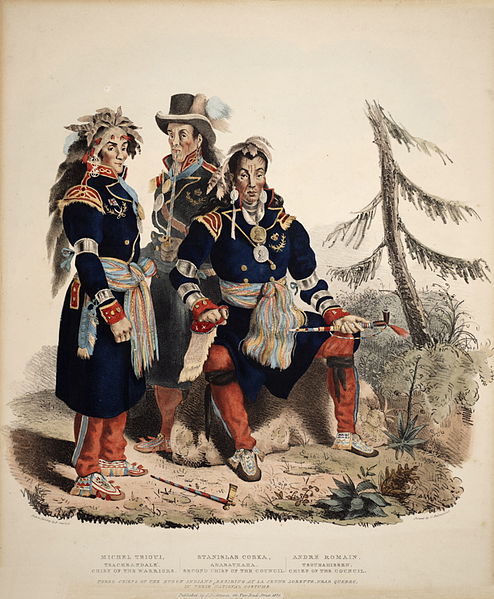An urban Indian reserve is land that the Government of Canada has designated as a First Nations reserve that is situated within an urban area. Such lands allow for aboriginal commercial ventures which enjoy the tax exemptions offered to traditional reserves. They may be located within either a municipality or, in the case of Saskatchewan, a Northern Administration District.
Many urban reserves host successful businesses. This Petro-Canada and Tim Hortons is on an urban reserve in Fort Smith, Northwest Territories.
Wendake is the current name for two urban reserves, Wendake 7 and Wendake 7A, of the Huron-Wendat Nation in the Canadian province of Quebec. They are enclaves entirely surrounded by the La Haute-Saint-Charles borough of Quebec City, within the former city of Loretteville. One of the Seven Nations of Canada, the settlement was formerly known as Village-des-Hurons, and also as (Jeune)-Lorette.
The Place de la nation huronne-wendat in Wendake
Three Huron-Wyandot chiefs from the Huron reservation (Lorette) now called Wendake in Quebec, Canada in 1825. At far left is Michel Tsioui (Teachendale), war chief. Centre is Stanislas Coska (Aharathaha), second chief of the council. At far right is André Romain (Tsouhahissen), first chief of the council.
Entrance sign
Old Wendake Historic District National Historic Site of Canada





